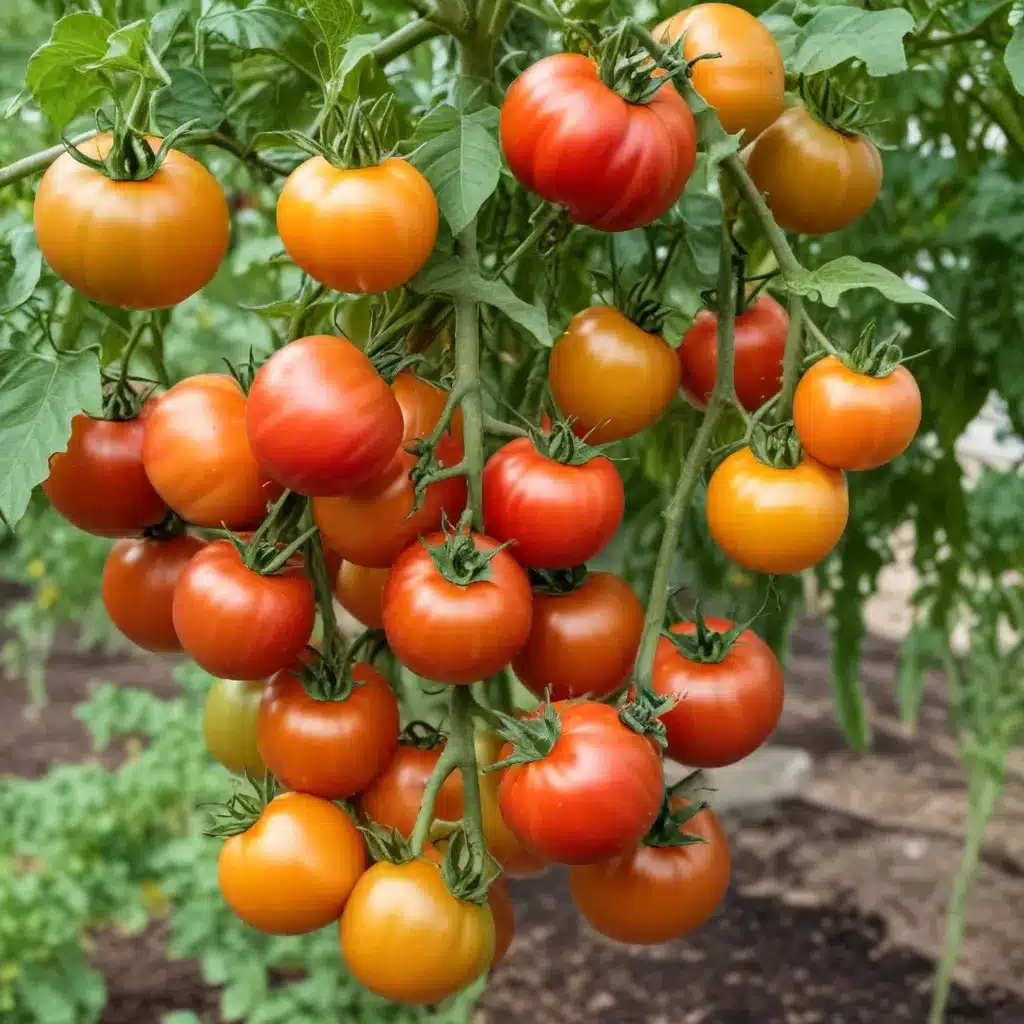
As a farm educator at Crooked Pines Farm, I’m excited to share my insights on the joys and challenges of cultivating an heirloom tomato garden. Heirloom tomatoes offer a world of flavor, color, and history that simply can’t be found in the bland, uniform produce lining grocery store shelves. By growing these unique varieties, you’ll not only enjoy delicious, vine-ripened tomatoes, but you’ll also play a role in preserving agricultural biodiversity.
Selecting Heirloom Tomato Varieties
Heirloom tomatoes are open-pollinated varieties that have been passed down for generations, often within families or local communities. Unlike hybrid tomatoes, which are bred for traits like shelf-life and uniformity, heirlooms are prized for their incredible diversity in shape, size, color, and, most importantly, flavor. Some may have been cultivated for hundreds of years, while others are relatively new additions to the heirloom tomato pantheon.
This diversity is what makes heirloom tomatoes so special. You’ll find beefsteak types that can weigh over a pound, delicate cherry tomatoes bursting with sweetness, and paste varieties perfect for sauces and canning. Heirlooms come in a vibrant array of colors, from the deep, almost black “Chocolate Stripes” to the sunny yellow “Pineapple” to the stunning bicolors like “Green Zebra.” Each variety has its own unique flavor profile, ranging from the acidic and tangy to the rich and juicy.
When selecting heirloom tomato varieties for your garden, take the time to explore the amazing diversity on offer. Seed catalogs and online retailers are treasure troves of unusual and hard-to-find types. Don’t be afraid to try something new – you may discover a new favorite that becomes a staple in your kitchen for years to come.
Preparing the Heirloom Tomato Garden
Heirloom tomatoes thrive in well-drained, nutrient-rich soil. Choose a sunny location that receives at least 6 hours of direct sunlight per day. Raised beds or in-ground planting both work well, as long as you amend the soil with plenty of organic matter like compost or aged manure.
When transplanting your heirloom tomato seedlings, be sure to plant them deeply, burying the stem up to the first set of leaves. This encourages the development of additional roots, resulting in a stronger, more vigorous plant. Space your tomatoes 2-3 feet apart, depending on the expected size of the mature plant.
Provide sturdy trellises, cages, or stakes to support the indeterminate growth habit of most heirloom varieties. Proper support not only keeps your plants upright, but it also improves air circulation, which can help prevent disease. Remember to prune and sucker your plants regularly to direct energy into fruit production.
Cultivating Heirloom Tomatoes
Consistent, deep watering is key for heirloom tomatoes, as they require consistent moisture to produce their best fruit. Avoid wetting the leaves, which can lead to fungal issues. Mulching around the plants with straw, leaves, or wood chips can help retain soil moisture and suppress weeds.
Fertilize your heirloom tomatoes with a balanced, organic fertilizer at planting, and then again mid-season. Avoid over-fertilizing, as this can result in lush foliage at the expense of fruit production.
Keep a vigilant eye out for common pests like aphids, hornworms, and spider mites. Employ organic control methods like hand-picking, introducing beneficial insects, or using insecticidal soaps or horticultural oils. Similarly, monitor for diseases like early blight, late blight, and fusarium wilt, and take preventative measures like ensuring proper air circulation and applying organic fungicides if needed.
Harvesting and Enjoying Heirloom Tomatoes
Determining the perfect moment to harvest your heirloom tomatoes can take some practice, as their colors and textures may differ from the “tomato red” we’re accustomed to seeing in grocery stores. Pay attention to the fruit’s feel – it should be slightly soft and yield to gentle pressure. Heirloom tomatoes are often not as uniform in their ripening, so you may need to make multiple passes through your garden to collect the ready-to-eat fruit.
Once harvested, heirloom tomatoes have a relatively short shelf life compared to their hybrid counterparts. Use them quickly, or preserve them through canning, freezing, or dehydrating. Heirloom tomatoes make exceptional sauces, salsas, and farm-to-table dishes that showcase their unique flavors.
Seed Saving and Propagation
One of the best ways to ensure the continued existence of your favorite heirloom tomato varieties is to save their seeds. Select the healthiest, most flavorful fruits from your garden and follow proper seed extraction and drying techniques. This not only allows you to grow the same beloved varieties year after year, but it also contributes to the preservation of genetic diversity in the wider heirloom tomato community.
When starting your heirloom tomato seeds indoors, be sure to provide them with ample light, warmth, and consistent moisture. Transplant your seedlings outdoors after the last frost, hardening them off gradually to prevent transplant shock.
Growing an heirloom tomato garden is a richly rewarding experience, allowing you to explore the vast world of unique and flavorful produce. By preserving these one-of-a-kind varieties, you’ll not only enjoy delicious homegrown tomatoes, but you’ll also play a vital role in safeguarding agricultural biodiversity for future generations. Embrace the diversity, experiment with new-to-you varieties, and savor the delicious fruits of your labor.
For more information on growing and preserving heirloom tomatoes, be sure to visit Crooked Pines Farm. Our team of farm educators is always happy to share their expertise and connect you with the resources you need to cultivate a thriving heirloom tomato garden.


